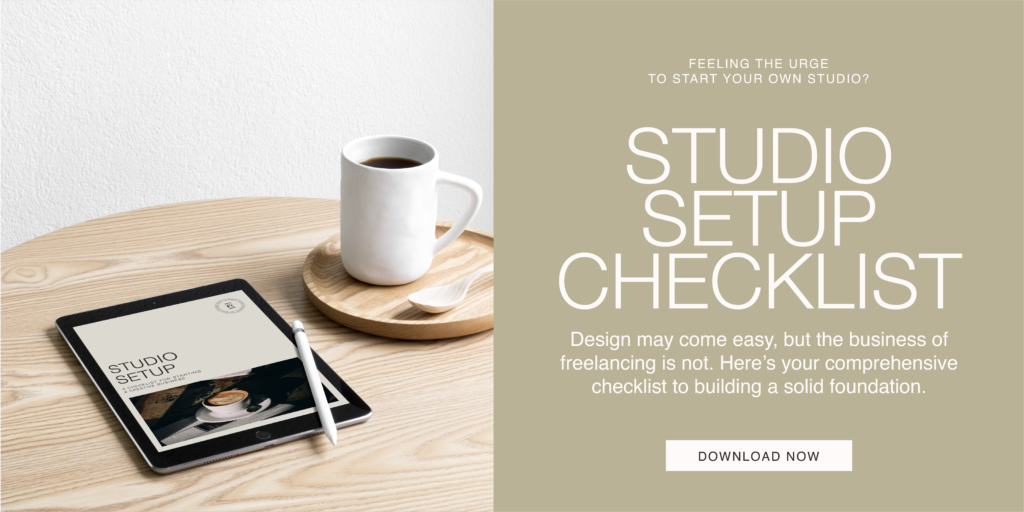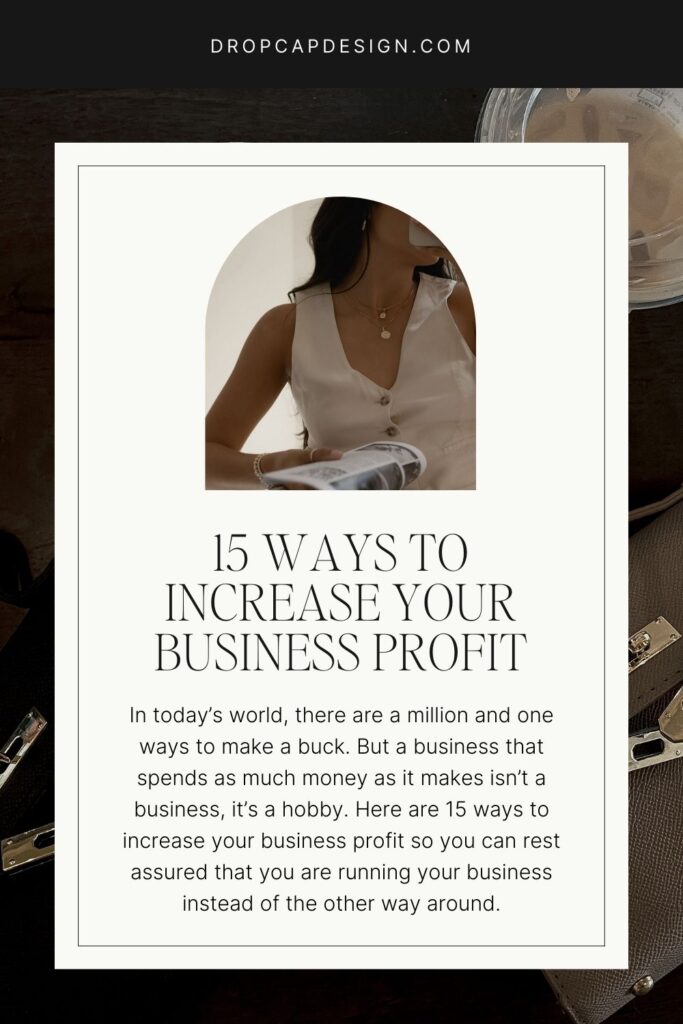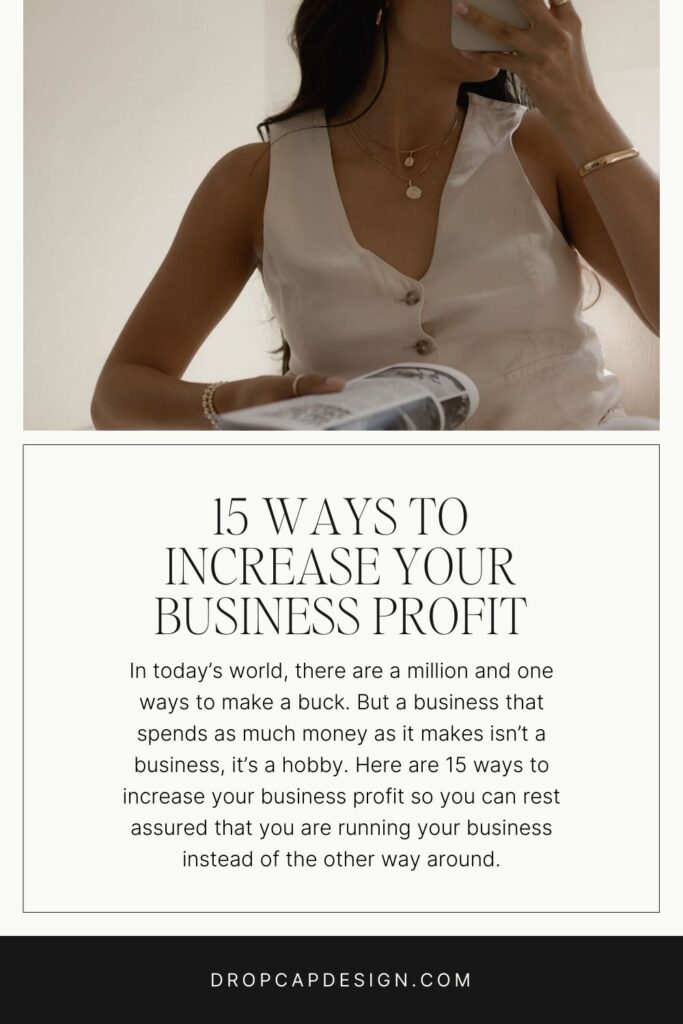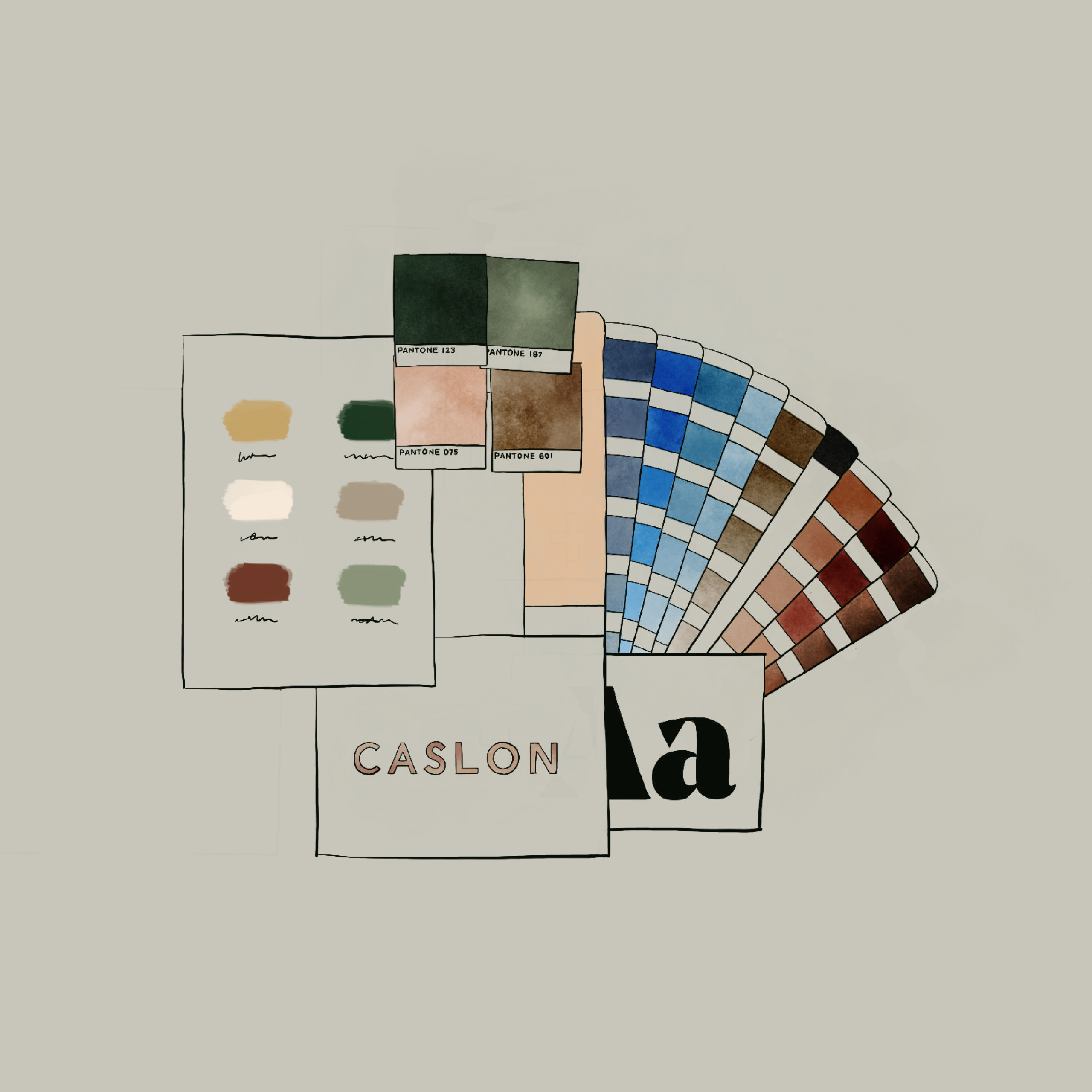In today’s world, there are a million and one ways to make a buck. From creative freelancing to influencing and everything in between—the digital marketplace is a plethora of opportunities. But it can also be quicksand for your small business. With every opportunity to make money, you’ll also find an opportunity to spend it. So why is it important to pay attention to your business profit?
I’ll shoot straight—a business that spends as much money as it makes isn’t really a business, it’s a hobby. Because no matter how frugal you may be, living isn’t free.
In the past few years, we’ve experienced change and uncertainty, economic recessions and shifting industries, AI, and a nomadic workforce. In other words, we’re in new territory. And the thing that will help your business sustain your life no matter what changes are around the corner is the ability to make your ideas profitable.

When is my business considered profitable?
Being profitable means you make more than you spend running your business. But with orders rolling in and money going out, how do you know whether or not you’ve reached that point? Is it when you have money in a bank account? When you send your first invoice? Make your first sale?

Understanding Profitability
- Gross Profit: Total Revenue – Project Costs
The first number you’re looking at is your gross profit. This is your revenue minus your “direct costs” or what I refer to as “project costs”. For instance, as a creative agency my “project costs” are font purchases, paying contractors, or anything that was required to complete the project. Direct costs are variables that change based on the project I’m working on, and what’s needed to complete it. - Operating Profit: Gross Profit – Overhead Expenses
Next, we’re looking at your operating profit. This is your gross profit minus your “operating expenses”, which is anything that’s required to run your business but not necessarily tied directly to a specific client or project. Things like your subscriptions, a virtual assistant, and website costs… you know the drill. (You can see a whole list of the overhead expenses I use inside The Edit!) These are fixed costs that are the same month after month. - Net Profit: Operating Profit – Taxes
And finally—we’ve reached your net profit. This is when you can start popping the champagne! Once you’ve subtracted what you needed to complete the project, what you needed to keep your business running, and what you need to pay the government—the rest is what can truly be determined as your profit margin. This is what you have available to reinvest in your business, treat yourself, or save. This is also the area where I try to make improvements each year.
It can be so easy to say “I want to have a Six Figure Business” but if you’re spending 6 figures trying to get there… you still have a hobby. But say instead you have the goal of a business that runs on 20% net profit (for example), then as your customer base grows, you actually experience financial wealth instead of running faster on the hamster wheel.
How long will it take for my business to turn a profit?
There is no magic formula or guarantee for how or when your business will be profitable. But on average, it takes most small businesses a few years to get there.
Even the most influential brands in the online space don’t always rely on their business venture to pay their bills. Most of us have worked day jobs and small jobs to make our bigger dream a reality, investing everything we make right back into courses and coaches to get us, and our idea, to the next level.
If you’re starting out and dreaming of the day you can go full-time, don’t be discouraged if it’s taking longer than you thought. A slow business that’s inching closer and closer to sustainable net profit is better set up for long-term success and happiness.

How can I increase my net profit this year?
Now that you know what you’re aiming for, let’s go through a few ideas for how to increase your net profit and get much closer to true entrepreneurial success.
Focus on nurturing your current customers instead of finding new ones.
The best customer you can find is your existing one. They have skin in the game, and they’re already rooting for you to win. If you’re looking to increase your net profit but don’t know where to start—look no further than your current audience. Ask what they want to see from you, how you can serve them, and what’s next in their journey. And then meet that need. You’ll spend less money serving the same people at higher and higher levels than you will by going out into the world to find brand new people month after month.
Consider collaborations and partnerships.
One of the easiest ways to get clients is to partner with someone who’s already serving a similar audience to the one you want to work with (but serving in a different way!) For instance, I often partner with Copy Uncorked to do the design portion of branding while her team works on the copy. I also work with the TONIC team frequently to brand and customize their customers’ websites once they’ve purchased a template. Building genuine relationships is a free way to make a big impact on your business.
Make the purchase as easy as possible.
Instead of signing up for every flashy system and automation on the market, consider simplifying your software and making purchasing as easy for your customer as possible. All you need is to exchange money for a product or service. That doesn’t necessitate as many tools as you might think. If you’re running your business on a million different apps to get to the checkout line, take inventory of how much purchase costs you and if there are ways to simplify the experience for you and your customer.
Don’t leave money on the table.
You’ve probably spent much time dreaming about your services, products, and experiences. But don’t forget actually to listen to the needs of your client. You might be leaving money on the table.
For instance, if you’re a systems manager, consider offering a training workshop to teach your client’s team how to use the new system, or offer a subscription for monthly updates & systems cleanup. You could even do an ongoing quarterly audit.
If you’re a fitness coach, consider resources that could help your clients put your advice into practice—like a meal plan, a daily workout reminder, or even a list of your favorite products. Think of the entire customer experience and if there are any ways to elevate the sale that benefit you both.
Identify what could come before/after your main offer.
If you have a signature offering or packages, think through your ideal customer. What did they already figure out before coming to you? What are their immediate needs after? For instance, if you’re a web developer, consider creating a digital workbook that could help potential clients plan out their content, and then after they’ve launched a maintenance planner with schedules for when to update plugins, how to boost SEO, and ways to keep a website running well.
Consider collaborations and partnerships
One of the easiest ways to get clients is to partner with someone who’s already serving a similar audience to the one you want to work with (but serving in a different way!) For instance, I often partner with Copy Uncorked to do the design portion of branding while her team works on the copy. I also work with the TONIC team frequently to brand and customize their customers’ websites once they’ve purchased a template. Building genuine relationships is a free way to make a big impact on your business.
Don’t undervalue your time
I get it, we want our customers to have an amazing experience. Here at Drop Cap, hospitality is one of our core values as a team, and I want nothing more than for every one of our clients to have an outstanding experience every time they work with us. But… I also know the value of an hour, no matter who is fulfilling it on our team. Toggl is a free tool to help you track your time because wasting hours on something that’s not actually driving revenue is another way to waste money and keep your business from increasing its net profit. By putting a dollar sign on your hours, you’ll see the “cost” of tasks like blogging or scrolling Instagram, or redesigning your pricing guide for the millionth time.
Prioritize the experience, not the product
Yes, having an amazing product is absolutely necessary to keep a business going. Your reputation depends on it. But another thing your business relies on is the experience that someone has to work with you. It’s not good enough to be an incredible copywriter if you’re also a jerk, or a stunning photographer if you take 100 years to respond to an email. Most clients are loyal to the people they enjoy interacting with, so making sure you aren’t stretched too thin and have the mental and emotional capacity to truly serve your customer isn’t a nice-to-have, it’s ultimately contributing to your profitability.
Track what’s working, and not working
Back to using Toggl—when you know how you’re spending your time (and the amount it’s “costing” you) you have to evaluate what’s working and what’s not working. Maybe you’ve wanted to blog 3x/a week, but writing takes forever. Instead, you could try a podcast or shoot a video tutorial. Maybe you’re spending more time on discovery calls than you’re actually booking clients and you would benefit from vetting inquiries to only chat with realistic candidates. Having that information allows you to make educated calls in your and your business’s best interest to get closer to being profitable.
Be intentional with new opportunities
It’s exciting when a new opportunity comes along. But just like everything else, it’s important to approach opportunities realistically. What’s required of you? How much time will it take? What’s the return? If an opportunity looks flashy but doesn’t make sense when you evaluate the time and resources required to make it profitable, you owe it to yourself to pass. More opportunities will come, be discerning with what you say yes to.
Have a clear vision for the future
The most important thing you can do to build your brand and make your business profitable is to have a vision for where you’re going. I always found it a bit paralyzing when anyone asked me what my “why” is—I mean, is it supposed to be something global and humanitarian like solving world hunger or building schools? Those lofty big-life purposes did little to help me connect with the day-to-day of running my business. So I changed the question to “what’s the point.”What’s the point of making more profit? Is it to move to a new city, buy a house, or retire by a certain age? What’s the point of your podcast? Is it the reach of a new market that you want to be a client for your coaching services? Promote your programs or start taking affiliate marketing more seriously?
“What’s the point” has saved me from going down a lot of rabbit holes that weren’t taking me in the direction of where I wanted to go. If the point isn’t directly tied to my vision of the future then I consider it busy work.
Utilize the network of your favorite clients & customers
The reason your customers’ experience is so important isn’t just to work with them again, it’s also to work with their extended network as well. An ideal client is more likely to send other ideal clients your way. And if you’ve thoroughly enjoyed working with someone, tell them! And tell them who you’re looking to work with in the future. Chances are when the right person crosses their path, they’ll send them your way.
Stop reinventing yourself
It’s so tempting to rebrand or reinvent your business when you’re afraid of doing the work required to get to the next level. Elevating is tough, and pushing yourself is taxing. I get it. I use to do this too, constantly focusing on my brand as a way to put off the work I needed to do to focus on my profit. And at the end of the day, a shiny new logo or color palette isn’t going to get you to the next level in your business if there isn’t a stronger plan and purpose there, it’s just shiny busywork. Don’t reinvest or restyle to put off the less sexy tasks of running a business. Focus on your profit first, then reward yourself with the makeover.
Consider underserved communities
The world is big, but many of us are trying to serve the same people. If you’re hitting a wall competing for work and discounting your services and products just to sell to an over-served community—it’s time to look elsewhere. Who isn’t being served? Where else does your product or service make sense?
For instance, if you’re a social media manager who’s chasing the same creative entrepreneur that’s reaching out to a dozen other studios for social media help, think about other markets. Maybe you could white-label for agencies whose clients need social media help. Or you could reach out to your favorite coffee shops and restaurants in your city to boost their content. Or you could start doing consumer-generated content for your favorite products on Amazon or Tik Tok—all I’m saying is, there’s a bigger world out there. Don’t price compete if you don’t have to.
Ask questions again and again
Ask questions, and be a constant student of your industry and the online space. Try, and if it doesn’t work—be curious. What could you change, or try differently? In this last launch of The Brand Edit™, I sent out a survey to anyone who opened all my emails but didn’t buy the course asking what their reasons were. I assumed no one would answer because they were opening but not really doing anything with the emails.
But, I got dozens of replies with actually helpful feedback. Immediately, I realized there was nothing wrong with the course, but if I had launched even two weeks earlier than the window I did, I would have made almost double my sales. Yeah… asking that question will make my next launch TWICE as profitable. One email… double the net profit. You see where I’m getting…
Lead with your personality and passion.
People buy from passionate businesses. The ones committed to their community, committed to creating a great product, committed to excellence. Lead with your personality, and share your passion. Invest in yourself, and take CARE of yourself! Self-care—rest, movement, meditation, gratitude—profoundly impacts our ability to show up for our business, clients, community, and ideas. So, taking care of yourself is vital to increasing your profitability this year.
SAVE FOR LATER







